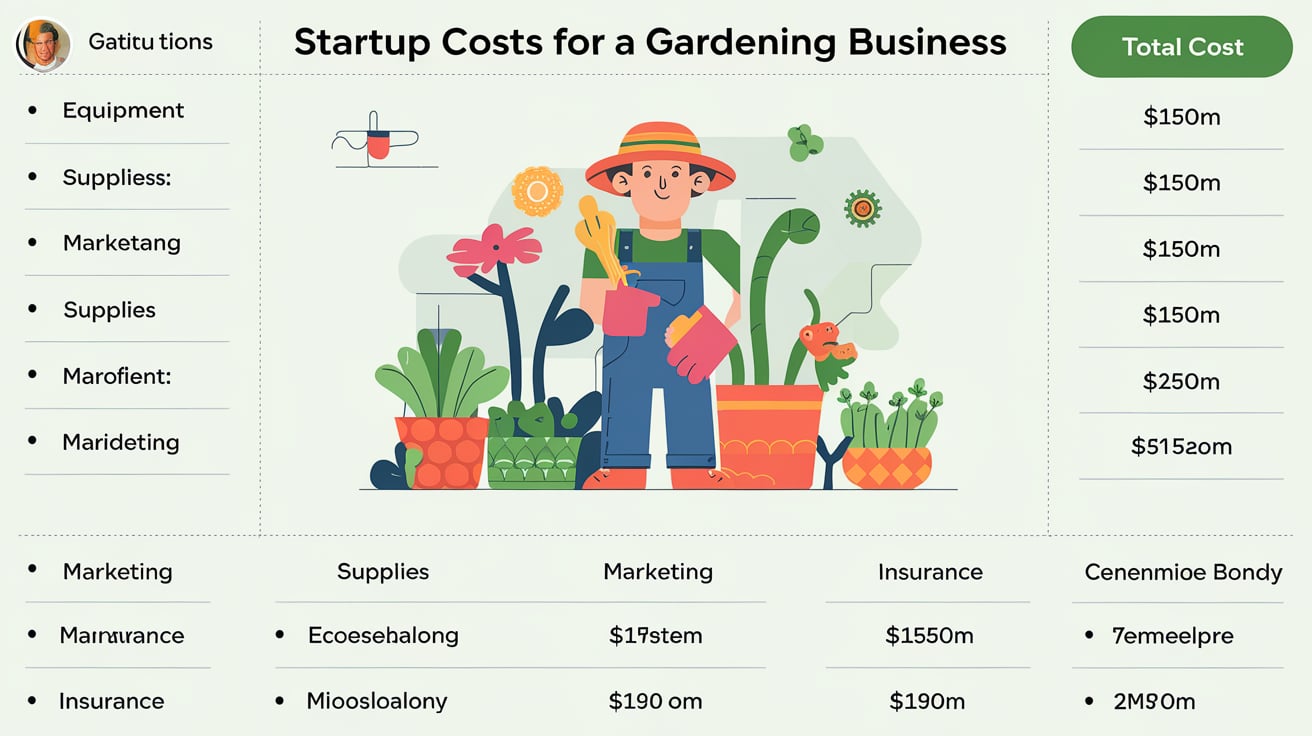In the vast landscape of digital marketing, content reigns supreme as a potent tool for propelling businesses forward. Small business owners, marketing professionals, and entrepreneurs who harness the power of compelling content hold the key to unlocking unparalleled success.
Welcome to a comprehensive guide geared towards refining your approach to content marketing mastery; it is time to propel your brand to new heights through strategic implementation.
Understanding that your audience lies at the core of every successful content endeavor is pivotal. By delving into the intricacies of your target market’s demographics, preferences, and pain points, you pave the way for tailored content that resonates deeply with their needs.
Setting clear objectives becomes the compass by which your efforts are guided – from enhancing brand visibility to cultivating customer loyalty.
Through actionable steps underscored by authority and practicality, this article sets forth a roadmap brimming with transformative potential for your business ventures in content marketing.
Let us embark on this journey together towards realizing unrivaled success in the realm of digital engagement.
Understanding Your Audience.
To excel in content marketing, understanding your audience is paramount. By delving into the demographics, preferences, and pain points of your target market, you can create tailored content that resonates deeply with them.
For instance, if you run a skincare brand targeting young adults concerned about acne, knowing their age group and specific skin concerns enables you to craft content addressing solutions to their skincare issues.
Moreover, developing detailed buyer personas is instrumental in honing your content strategy. These fictional representations of your ideal customers help personalize your approach further. Imagine a boutique coffee shop owner creating personas like “Eco-Conscious Erin” who values sustainability or “Busy Brian” who seeks convenience on-the-go.
By catering to these personas’ needs through eco-friendly practices or quick grab-and-go options respectively, the coffee shop can more effectively connect with its diverse clientele.
By segmenting your audience based on behavioral patterns and preferences, you can create content that speaks directly to different subsets within your customer base. Consider an outdoor gear company targeting both adventure-seeking Millennials and family-oriented Gen Xers.
Crafting unique narratives for each group—perhaps focusing on solo treks for Millennials and camping tips for families—allows for personalized engagement that drives relevance and connection with distinct segments of the market.
In essence, comprehending your audience’s nuances equips you with the insights needed to develop compelling content strategies tailored precisely to meet their needs.
This nuanced understanding sets the foundation for successful campaigns that engage, resonate, and ultimately convert leads into loyal customers by showcasing how your products or services solve their problems or fulfill their desires.
Setting clear objectives.
Setting clear objectives is a foundational step in mastering content marketing for small business owners, marketing professionals, and entrepreneurs. By defining specific goals for your content strategy, such as enhancing brand awareness, generating leads, or improving customer retention, you create a roadmap for success.
For instance, if your objective is to increase brand awareness, you may focus on developing content that showcases your company’s values and unique selling proposition across various platforms to reach a wider audience.
In addition to setting goals, establishing key performance indicators (KPIs) is crucial for measuring the effectiveness of your content marketing efforts. These metrics provide valuable insights into the performance of your campaigns and help you make data-driven decisions to optimize results.
For example, if one of your objectives is lead generation, relevant KPIs could include tracking conversion rates from landing pages or monitoring the number of qualified leads acquired through content downloads or subscription forms.
By aligning clear objectives with measurable KPIs, you can ensure that your content marketing endeavors remain focused and result-oriented.
Whether you aim to drive website traffic, nurture customer relationships, or increase sales conversions, having well-defined goals and performance metrics in place empowers you to track progress and make necessary adjustments along the way.
Ultimately, setting clear objectives not only guides your content strategy but also serves as a compass to steer your business towards achieving tangible growth and success.
Crafting Compelling Content.
Crafting compelling content is at the core of any successful content marketing strategy. To truly engage and resonate with your target audience, it’s crucial to prioritize quality and value in every piece you create.
For instance, if your small business specializes in eco-friendly products, producing content that educates consumers about sustainable living practices or highlights the environmental benefits of your offerings can establish you as an authority in your niche.
By understanding what matters most to your audience, you can tailor content that not only captures their attention but also adds significant value to their lives.
Diversifying your content formats is another key aspect of crafting compelling material. People consume information in various ways, so offering a mix of blog posts, videos, infographics, and podcasts can cater to different preferences within your target demographic.
For example, consider creating a series of how-to videos demonstrating the practical uses of your products alongside long-form blog articles that delve into industry trends or customer success stories. This multifaceted approach not only keeps your audience engaged but also allows you to convey information creatively across multiple platforms.
Moreover, personalization plays a vital role in ensuring that your content resonates with individual consumers. By segmenting your audience based on their interests or purchasing behavior and tailoring specific content recommendations to each segment, you can create a more personalized experience for users.
For instance, if a particular group of customers frequently engages with video content over written articles, customizing your outreach to include more video-based materials can enhance their overall interaction with your brand. This level of customization demonstrates that you understand and value each customer’s preferences, fostering stronger connections and loyalty over time.
Leveraging SEO Strategies for Content Marketing Success.
In the digital landscape, mastering Search Engine Optimization (SEO) is paramount to enhancing your content marketing strategy’s effectiveness. By optimizing your content with relevant keywords, meta tags, and internal links, you can significantly improve your website’s visibility and organic search rankings.
For example, if you own a small bakery in Chicago specializing in artisanal cupcakes, incorporating specific keywords like “best cupcakes in Chicago” or “unique cupcake flavors” into your content can attract local customers searching for these offerings online.
Furthermore, creating engaging and informative content is key to capturing the attention of both your target audience and search engines. When crafting blog posts or product descriptions, focus on providing valuable information that answers common consumer queries or addresses pain points within your industry.
For instance, if you run an e-commerce site selling eco-friendly home products, writing detailed guides on sustainable living practices or reviews of new environmentally friendly trends not only educates your audience but also boosts your SEO rankings by offering valuable insights.
Additionally, investing time in developing a diverse content mix that resonates with different segments of your target audience can further enhance your SEO efforts. Utilizing various formats such as videos, infographics, podcasts, and interactive quizzes ensures that you cater to different learning styles and browsing preferences.
For example, supplementing traditional written blog posts with visually appealing infographics showcasing sustainable home renovation tips can attract users who prefer visual content while still boosting SEO through relevant keywords embedded in the graphics.
By aligning your SEO strategies with compelling content creation techniques, you create a powerful synergy that boosts your online visibility and drives organic traffic to your website.
Remember that search engines reward high-quality content that provides value to users; thus, focusing on creating informative and engaging material tailored to both human readers and search algorithms will ultimately lead to long-term success in content marketing endeavors.
Distribution Channels for Content Marketing.
When it comes to content marketing, choosing the right distribution channels is key to reaching and engaging your target audience effectively. Understanding where your audience spends their time online allows you to tailor your content strategy for maximum impact.
For instance, if your business targets a younger demographic, platforms like Instagram and TikTok might be more suitable for distributing visually appealing content, while professional services might find LinkedIn more conducive to sharing industry insights.
In addition to social media platforms, email marketing remains a valuable tool for directly reaching your audience. Crafting personalized and relevant email campaigns can nurture leads and drive conversions.
Consider segmenting your email lists based on demographics or behavioral data to deliver targeted content that resonates with each group. Collaborating with influencers in your industry can also amplify your reach by leveraging their existing audiences and credibility.
Guest blogging is another effective distribution channel that can help you tap into new audiences and establish authority in your niche. By contributing guest posts to reputable sites within your industry, you not only expand your reach but also enhance brand visibility and credibility.
Leveraging these diverse distribution channels ensures that your content is seen by the right people at the right time, driving engagement and ultimately conversions for your business.
Remember that the success of content marketing lies not only in creating compelling content but also in strategically distributing it across channels where it will have the most impact.
By incorporating a mix of social media platforms, email marketing strategies, guest blogging opportunities, and influencer collaborations into your distribution plan, you can maximize exposure, build brand awareness, and foster meaningful connections with your target audience.
Analyzing Performance Metrics.
To measure the effectiveness of your content marketing efforts, analyzing performance metrics is crucial. By monitoring key indicators such as website traffic, conversion rates, engagement levels, and social media shares, you gain valuable insights into the success of your campaigns.
For instance, tracking website traffic allows you to understand how many visitors are interacting with your content and where they are coming from. Similarly, monitoring conversion rates provides insight into the percentage of visitors who take a desired action, such as signing up for a newsletter or making a purchase.
Utilizing analytics tools such as Google Analytics or social media insights helps in dissecting data to identify trends and patterns that inform decision-making.
For example, by analyzing which blog posts receive the highest engagement levels or generate the most conversions, you can tailor future content to align with your audience’s preferences. This data-driven approach ensures that your content strategy remains agile and adaptable based on real-time performance feedback.
Moreover, paying attention to social media shares can gauge the virality and reach of your content across different platforms. When certain pieces of content start gaining traction through shares and reposts, it indicates resonance with your audience.
By understanding what type of content drives social sharing, you can optimize future campaigns to amplify your brand’s online presence effectively.
Remember, consistent analysis and adjustment based on performance metrics are key to refining your content marketing strategy for optimal results in reaching and resonating with your target audience.
Building Relationships with Your Audience.
To excel in content marketing, it’s crucial to not only create compelling content but also build meaningful connections with your audience. Engaging with your audience through comments, messages, surveys, and interactive content is a fundamental step in nurturing these relationships.
For instance, when a customer leaves a comment on your blog post or social media page, respond promptly and thoughtfully. By acknowledging their feedback and engaging in dialogue, you show that you value their opinion and are actively listening to their needs.
Cultivating trust and loyalty is another vital aspect of fostering strong relationships with your audience. When customers feel heard and supported by your brand, they are more likely to develop a sense of loyalty towards your products or services.
For example, consider addressing customer queries or concerns in a timely manner. By providing valuable solutions to their problems and demonstrating genuine care for their experience, you can establish trust that goes beyond mere transactions.
Moreover, utilizing surveys can offer valuable insights into the preferences and opinions of your audience. By collecting feedback through surveys, you can tailor your content strategy to better meet their needs.
Interactive content such as quizzes or polls can also be effective in engaging with your audience on a deeper level. Encouraging participation through interactive elements fosters a sense of community around your brand, strengthening the bond between you and your customers.
In conclusion, building relationships with your audience is not just about selling products; it’s about creating connections that result in long-term loyalty and advocacy for your brand.
By engaging authentically, responding proactively to feedback, and offering valuable solutions to their problems, you can cultivate a devoted following that propels the success of your content marketing efforts.
Repurposing content.
Repurposing content is a strategic approach that extends the lifespan and impact of your existing materials across diverse platforms. By repackaging content into different formats, you can reach new audiences and reinforce your messaging effectively.
For instance, transforming insightful blog posts into engaging webinars can cater to visual learners or those who prefer audio-visual content. This adaptation not only widens your reach but also enhances audience engagement by catering to varied preferences.
Similarly, converting podcasts into written articles allows for the dissemination of valuable information through a different medium. This repurposing method ensures that your content remains accessible to individuals who prefer reading over listening.
Additionally, transforming videos into bite-sized social media snippets capitalizes on the popularity of visual content consumption on platforms like Instagram or TikTok. By adapting your video content for these channels, you can capture the attention of audiences scrolling through their feeds and drive traffic back to your main content hub.
In essence, repurposing content is a cost-effective way to maximize the value of your existing assets while diversifying your online presence. It not only streamlines content creation processes but also reinforces brand messaging across various touchpoints.
By strategically repackaging your content into different formats tailored to specific platforms or audience preferences, you can amplify engagement, extend reach, and generate lasting impact in the competitive digital landscape.
Conclusion: Mastering Content Marketing.
Implementing the essential steps outlined in this guide will equip you with the tools needed to excel in content marketing.
By understanding your audience, setting clear objectives, crafting compelling content, leveraging SEO strategies, utilizing distribution channels effectively, analyzing performance metrics, building relationships with your audience, repurposing content, and consistently following these strategies, you will unlock success in your content marketing endeavors.
Consistency is key when it comes to mastering content marketing. Take decisive action on implementing these strategies to establish a robust online presence that drives business growth. Remember, success in content marketing is within reach when you commit to applying these fundamental principles diligently.
Embrace these steps as pillars of strength for your content strategy and watch your efforts translate into meaningful results for your business.
As an author writing and creating business courses and articles, I am responsible for developing and delivering high-quality content that is informative, engaging, and relevant to the target audience.
I monitor and analyzes business trends and topics to create courses and articles that provide value to readers and students here. I am responsible for ensuring that all content is accurate, well-written, and met the needs of the target audience.






